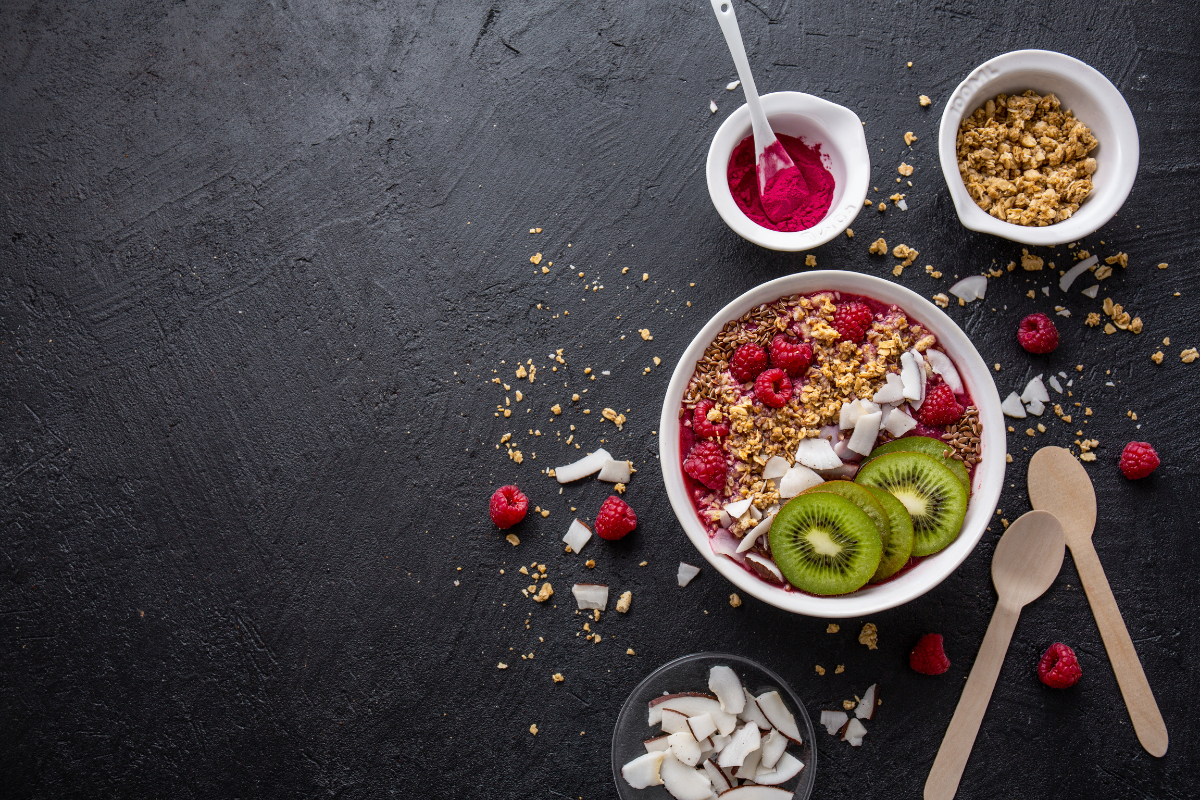Oats: How is it consumed and how many calories does it have?

Oats, scientifically known as Avena sativa L., have a reputation for being a healthy food mainly because they lower sugar and cholesterol levels, but they also have other benefits for the body. It is a cereal with a high content of fiber, also containing vitamins, minerals and antioxidants. It is a unique source of anthocyanins, antioxidants that are thought to protect against heart disease.
Usually, oats are recommended for a healthy breakfast. It can be consumed in many ways, as oatmeal (coarsely ground grains), as flakes (grains that are steamed to soften and then passed through cylinders to form a flake), or used in baked goods. Ground oats are used in conjunction with other cereal flours to make bread and pastries.
Table of Contents
The nutritional value of oats
The 100 gr. oats provide 389 calories and without counting water (it is 8%) contain:
- Proteins: 16.9 g.
- Carbohydrates: 66 gr.
- Fiber: 10.6 gr. of which 2.3-8.5 gr. are β-glucans (depending on the variety). Oat bran (a whole seed contains three parts, the endosperm, the kernel and the bran) has 50% more fiber than flakes.
- Fat: 6.9 gr.
Vitamins, trace elements and minerals
Oats have significant amounts of manganese, phosphorus, magnesium, selenium, copper, iron and zinc. It also provides a sufficient amount of vitamin B1 (30% of the daily recommendation) and vitamins B2, B5.
Carbohydrates
About 85% of the carbohydrates in oats are starch (large chains of glucose molecules). The sugar content is very low, only 1%. Oatmeal is somewhat different from other cereals. Fast-digesting starch is 7%, slow-digesting starch is 22% and durable starch is 25%. Resistant starch works much like fiber, ie it escapes digestion and feeds the gut-friendly bacteria.
Soluble & insoluble fiber
Oats provide more soluble fiber than other seeds and this leads to slower digestion, increased fullness and suppression of appetite. Beta-glucans are unique among soluble fiber. They can form a gel-like solution at a relatively low concentration. They lower blood cholesterol and increase the production of bile acids. They also lower blood sugar levels after a high-carbohydrate meal. They can also promote the release of the peptide YY (PYY), a hormone produced in the gut in response to the foods we eat. YY peptide has been shown to lead to reduced calorie intake. Oats also contain insoluble fiber, such as lignin, cellulose and hemicellulose.
Studies show that oat bran, the fiber-rich outer layer of oats, can help relieve constipation in the elderly. weeks. Almost 60% of these patients were able to stop using laxatives after the study [3].
Protein
Oats are a good source of protein which is 11-17% by weight. The main protein, 80%, is avenalin, which is not found in any other cereal and the secondary is avenin which is related to gluten. Pure oats are considered safe for people with gluten intolerance [4].
Antioxidants
Oats are high in antioxidants called polyphenols. Most notable is that it contains a group of antioxidants, avenant carbohydrates which are found almost exclusively in oats [5]. According to research, avenramide has 10 times more antioxidant activity than other antioxidants. They can help lower blood pressure by increasing the production of nitric oxide which helps dilate blood vessels and leads to better blood flow. Another antioxidant, ferulic acid, is also found in significant amounts in oats.
How to eat oats
Oats can be consumed in many ways and depending on its processing. You can find oat flakes (quaker), oat bran, oat flour, granola (mixture of oat flakes, nuts, dried fruits, etc.), bars and cookies. For granola, ready-made bars and cookies, choose products that contain a small amount of sugar.
Oatmeal comes from the whole fruit (and not just bran), so it has all the nutrients of the seed, proteins, minerals and vitamins. It is recommended to consume oat flakes in order to get all the nutrients from the plant. Combine oatmeal with yogurt or milk. Bran is recommended in more special cases such as the treatment of constipation and irritable bowel syndrome due to its high fiber content.
Porridge is a very nutritious breakfast and is popular in Northern Europe. It is made with 1 part oat flakes and 3 parts liquid (water, or milk) that are boiled in the pot for a few minutes. Nuts, honey, chocolate, fruits and spices can be added. While oats are eaten mainly in the form of porridge, it can also be used in many recipes. Oatmeal bars can be a nutritious snack choice.
At Vita4you.gr you will find supplements with oats!
References
- Slowly digestible starch: concept, mechanism, and proposed extended glycemic index.
- Effect of dose and modification of viscous properties of oat gum on plasma glucose and insulin following an oral glucose load.
- Use of fiber instead of laxative treatment in a geriatric hospital to improve the wellbeing of seniors.
- Consumption of pure oats by individuals with celiac disease: A position statement by the Canadian Celiac Association.
- Potential health benefits of avenanthramides of oats.
Disclaimer
The content of this blogspot is not and can not be considered as medical advice, diagnosis or treatment. All information is provided to readers solely for informational purposes. There is no intention to substitute this content for personalized medical advice, diagnosis, prognosis or treatment.

Leave a comment